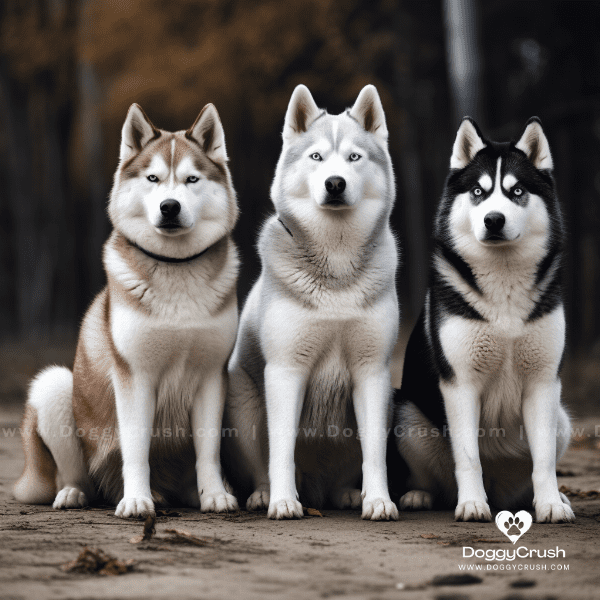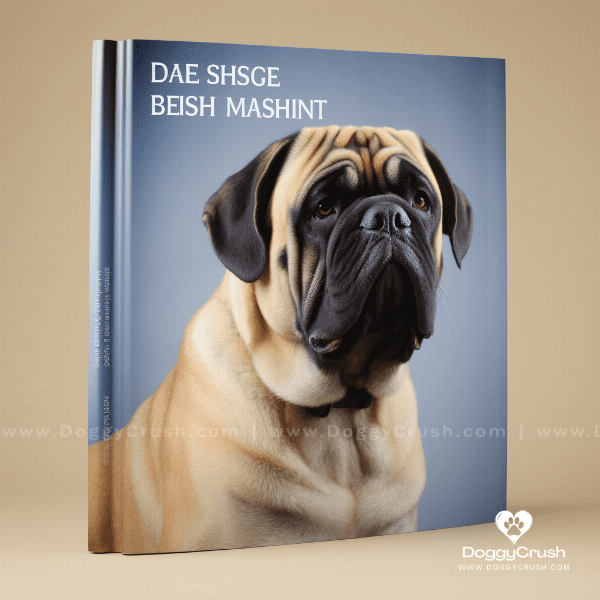Table of Contents
- History and Origin of Great Dane Dogs
- Physical Characteristics and Appearance
- Temperament and Personality Traits
- Health Concerns and Common Health Issues
- Exercise and Training Needs
- Nutrition and Feeding Requirements
- Grooming and Coat Care
- Living with Great Dane Dogs: Tips for Owners
- Great Dane Dog Breeding and Puppies
- Famous Great Danes in History and Pop Culture
History and Origin of Great Dane Dogs
The Great Dane is a large, powerful breed of dog that has been known by a variety of names throughout history. They are sometimes called the German Mastiff, the Deutsche Dogge, or simply the Dane. Despite the breed’s Germanic name, its origins are somewhat shrouded in mystery.
Origins of the Great Dane
One theory about the origins of the Great Dane is that it descended from the ancient Molossus dogs of Greece. These dogs were large and muscular, with powerful jaws and a protective nature. Another theory suggests that the breed was developed from the Irish Wolfhound, which was bred with smaller dogs in order to create a more versatile hunting dog.
The Development of the Great Dane Breed
Regardless of its origins, the Great Dane as we know it today was developed in Germany in the 19th century. The breed was created by crossing the English Mastiff with the Greyhound, resulting in a dog that was both powerful and agile. Over time, breeders refined the Great Dane’s characteristics, producing a dog that was taller and more refined than its Mastiff ancestors.
Great Danes in Society
Throughout history, Great Danes have been popular with European nobility and royalty. They were used as hunting dogs and as protectors of the home and family. In the 20th century, the breed became popular in the United States as well, thanks in part to their size and majestic appearance. Today, Great Danes are known for their gentle disposition, intelligence, and loyalty to their owners.
Overall, the history of the Great Dane is a fascinating one, with origins that are still somewhat debated by experts. However, it is clear that this breed has played an important role in the development of many modern Dog breeds, and continues to be beloved by dog owners around the world.

Physical Characteristics and Appearance
The Great Dane is a giant breed of dog that is known for its impressive size and striking appearance. Here are some of the key physical characteristics that make the Great Dane such a unique breed.
Size and Proportions
Great Danes are one of the tallest breeds of dog, standing between 28 to 32 inches at the shoulder. They typically weigh between 110 to 175 pounds, with males being larger than females. Despite their size, Great Danes are known for their graceful movements and athletic ability.
Coat and Color
The Great Dane has a short, smooth coat that comes in a variety of colors, including black, blue, fawn, brindle, and harlequin (a mix of white and black). Some Great Danes also have patches of white on their chest, feet, and muzzle. The breed is known for its striking appearance and regal bearing.
Head and Facial Features
The Great Dane’s head is one of its most distinctive features. It is long and narrow, with a flat skull and pronounced stop. The breed has deep-set, dark eyes and a friendly expression. Great Danes also have long, thin ears that hang down close to their head.
Body and Musculature
In addition to their height, Great Danes are known for their impressive musculature. They have a deep chest and powerful legs, which gives them a strong, athletic appearance. Despite their large size, Great Danes are known for their grace and agility.
Overall, the Great Dane is a breed that is known for its impressive size and striking appearance. From their long, narrow heads to their powerful bodies and graceful movements, Great Danes are a breed that is sure to turn heads wherever they go.
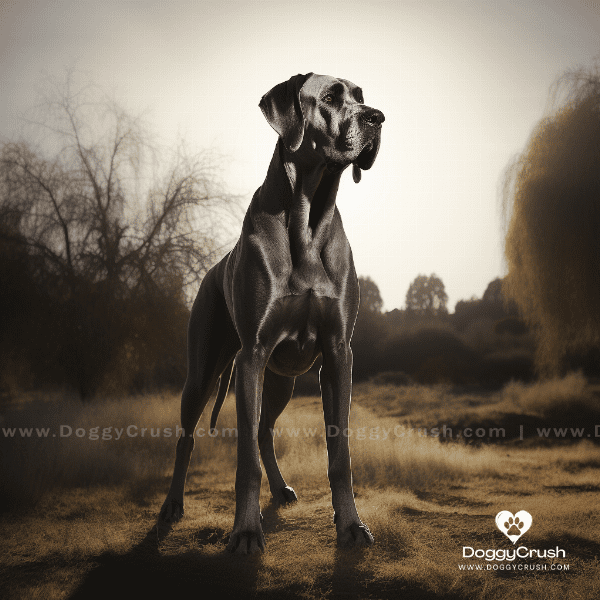
Temperament and Personality Traits
The Great Dane is often referred to as a “gentle giant” because of its friendly disposition and affectionate nature. Here are some of the key personality traits that make the Great Dane such a beloved breed.
Friendly and Social
Great Danes are known for their friendly and social nature. They are typically good with children and other animals, and enjoy spending time with their human family. This breed thrives on human companionship and is happiest when it is part of a loving home.
Intelligent and Trainable
Despite their large size, Great Danes are intelligent and trainable dogs. They are quick learners and respond well to positive reinforcement training methods. However, it is important to start training and socialization early in order to prevent behavioral issues from developing.
Calm and Relaxed
Great Danes are known for their calm and relaxed demeanor. They are not typically high-energy dogs and are content to lounge around the house with their owners. However, they still require regular exercise in order to maintain their physical and mental health.
Protective and Loyal
While Great Danes are typically friendly with strangers, they are also protective of their family and home. They will bark to alert their owners of any potential threats and will stand their ground if necessary. Great Danes are also fiercely loyal to their owners and will do anything to protect them.
Overall, the Great Dane is a breed that is known for its friendly and affectionate nature. They make great family pets and are a wonderful addition to any household that is looking for a loyal and loving companion.
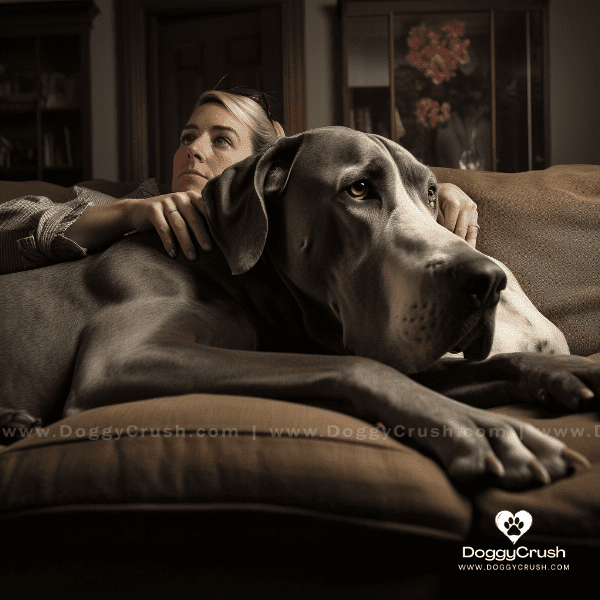
Health Concerns and Common Health Issues
Like all breeds of dog, the Great Dane is susceptible to certain health concerns and issues. Here are some of the most common health problems that Great Danes may experience.
Joint and Bone Issues
Because of their large size, Great Danes are prone to joint and bone issues, such as hip dysplasia and osteoarthritis. These conditions can cause pain and discomfort for the dog, and can also lead to mobility issues. Regular exercise and proper nutrition can help to minimize the risk of joint and bone issues in Great Danes.
Bloat
Bloat, also known as gastric torsion, is a serious condition that can affect Great Danes. It occurs when the stomach twists on itself, cutting off blood flow and preventing the dog from being able to vomit or pass gas. This can lead to shock and even death if not treated quickly. Feeding multiple small meals per day and avoiding exercise immediately after eating can help reduce the risk of bloat.
Heart Issues
Great Danes are also prone to certain heart issues, such as dilated cardiomyopathy. This condition causes the heart to become enlarged and weak, which can lead to heart failure. Regular check-ups with a veterinarian and a heart-healthy diet can help to minimize the risk of heart issues in Great Danes.
Cancer
Cancer is unfortunately common in Great Danes, with certain types of cancer being more prevalent than others. These can include osteosarcoma, lymphoma, and mast cell tumors. Regular check-ups with a veterinarian and monitoring for any lumps or bumps on the dog’s body can help to catch cancer early.
Overall, Great Danes are a generally healthy breed of dog. However, like all breeds, they are susceptible to certain health issues and it is important for owners to be aware of these and to take steps to minimize the risk. With proper care and attention, Great Danes can live long, healthy lives.

Exercise and Training Needs
Despite their large size, Great Danes do not require a huge amount of exercise. However, they do need regular physical activity in order to stay healthy and happy. Here are some tips for exercising and training your Great Dane.
Exercise Requirements
Great Danes are generally considered to be low-energy dogs, and do not need as much exercise as some other breeds. However, they still require daily walks and playtime in order to keep them healthy and happy. Great Danes also enjoy running and playing in open spaces, such as a backyard or dog park.
Mental Stimulation
In addition to physical exercise, Great Danes also need mental stimulation in order to stay healthy and happy. Puzzle toys, interactive games, and obedience training can all provide mental stimulation for your Great Dane. This can help prevent boredom and destructive behaviors.
Swimming
Great Danes are known to enjoy swimming, and it can be a great form of exercise for them. However, it is important to supervise your dog when they are in the water, as Great Danes are not natural swimmers and can tire easily.
Overall, Great Danes are a breed that require moderate exercise and training. With regular walks, playtime, and mental stimulation, they can be happy and healthy companions.
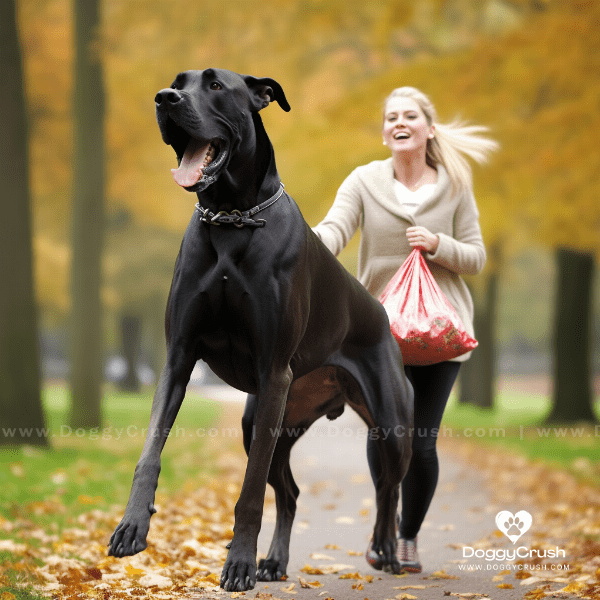
Nutrition and Feeding Requirements
Great Danes have specific nutritional needs due to their large size and rapid growth during puppyhood. Here are some guidelines for feeding your Great Dane.
Puppy Nutrition
During puppyhood, Great Danes require a diet that is specifically formulated for large breed puppies. This type of food contains the appropriate levels of protein, calcium, and other nutrients to support healthy growth and development. It is important to avoid overfeeding your Great Dane puppy, as excess weight can lead to joint and bone issues later in life.
Adult Nutrition
Once your Great Dane reaches adulthood, they can transition to a diet that is formulated for large breeds. This type of food contains the appropriate balance of protein, fat, and nutrients to support the dog’s large size and moderate energy needs. It is important to monitor your Great Dane’s weight and adjust their diet as needed to maintain a healthy body condition.
Feeding Schedule
Great Danes should be fed multiple small meals per day rather than one large meal. This can help to prevent bloat, which is a serious condition that can affect the breed. It is also important to avoid exercising your Great Dane immediately after eating, as this can increase the risk of bloat.
Water Intake
Because of their large size, Great Danes require a significant amount of water each day. Make sure that your dog has access to fresh, clean water at all times.
Overall, Great Danes have specific nutritional needs that should be addressed in order to promote good health and prevent health issues. With proper feeding and monitoring, Great Danes can live long, healthy lives.

Grooming and Coat Care
Great Danes have a short, smooth coat that requires minimal grooming. However, there are still some things that owners should do in order to keep their Great Dane’s coat healthy and shiny.
Brushing
Great Danes do not require frequent brushing, but it is still important to brush them occasionally in order to remove any loose or dead hair. A soft-bristled brush or a rubber grooming mitt can be used to gently brush the dog’s coat.
Bathing
Great Danes do not require frequent baths, as their short coat does not trap dirt and debris as easily as some other breeds. However, they should be bathed occasionally to keep their coat clean and shiny. Use a gentle, dog-specific shampoo and avoid getting water in the dog’s ears.
Nail Trimming
Great Danes have strong, fast-growing nails that require regular trimming. Neglecting nail trimming can lead to painful ingrown nails and difficulty walking. Use a sharp, dog-specific nail trimmer to trim the dog’s nails, or have a professional groomer or veterinarian do it for you.
Ear Cleaning
Great Danes have long, floppy ears that can trap dirt and debris, leading to ear infections. To prevent this, it is important to clean your Great Dane’s ears regularly. Use a gentle, dog-specific ear cleaning solution and a soft cotton ball or cloth to clean the inside of the dog’s ears.
Overall, Great Danes have a relatively low-maintenance coat that requires minimal grooming. However, it is still important to take care of their nails, ears, and coat in order to keep them healthy and comfortable.
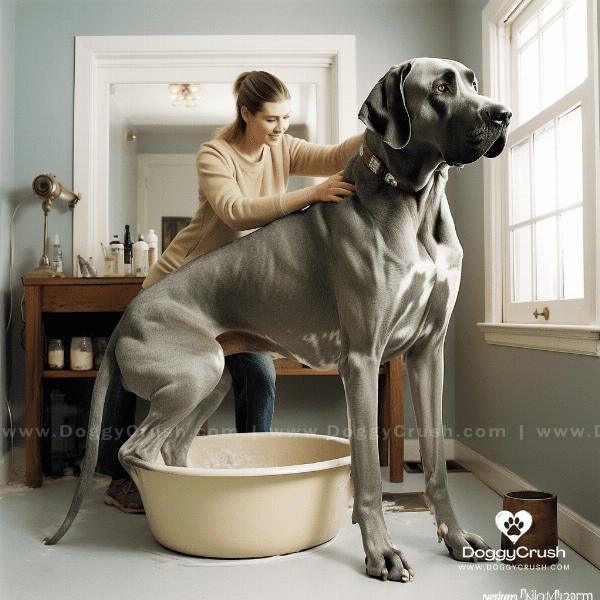
Living with Great Dane Dogs: Tips for Owners
Great Danes are a wonderful breed of dog, but they do require some special considerations when it comes to living with them. Here are some tips for living with and caring for your Great Dane.
Space Requirements
Great Danes are a large breed of dog and require ample space to move around comfortably. It is important to provide your Great Dane with a living space that is large enough to accommodate their size. This can be a large house with a fenced-in yard or a spacious apartment.
Regular Exercise
Great Danes are not high-energy dogs, but they still require regular exercise in order to stay healthy and happy. Daily walks and playtime are important for maintaining your Great Dane’s physical and mental health. However, it is important to avoid excessive exercise, especially in hot weather, as Great Danes are susceptible to overheating.
Health Monitoring
Regular check-ups with a veterinarian are important for monitoring your Great Dane’s health and catching any potential issues early. Great Danes are prone to certain health issues, such as joint and bone problems, bloat, and heart issues. It is important to be aware of these issues and to take steps to prevent them from developing.
Consider Adoption
If you are considering adding a Great Dane to your family, consider adopting one from a shelter or rescue organization. There are many Great Danes in need of loving homes, and adopting can be a great way to provide a home for a dog in need.
Overall, Great Danes are a wonderful breed of dog that can make loyal and loving companions. With proper care and attention, they can thrive in a variety of living situations and bring joy to their owners for many years.
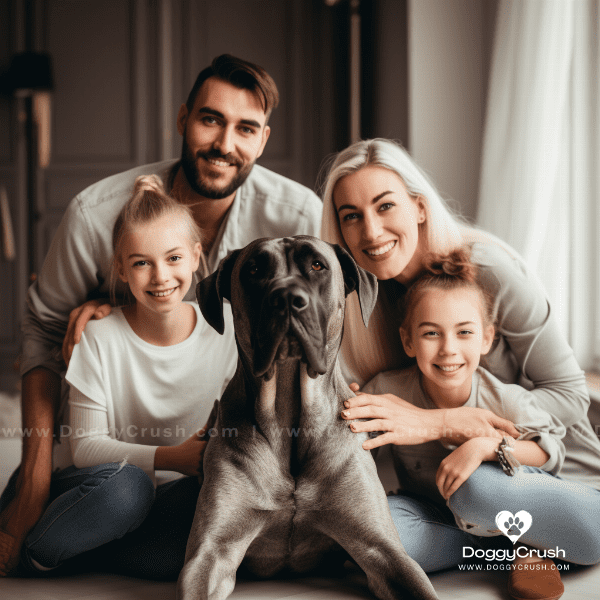
Great Dane Dog Breeding and Puppies
Breeding Great Danes should only be done by responsible and ethical breeders who prioritize the health and well-being of the dogs. Here are some things to consider when breeding Great Danes and raising puppies.
Responsible Breeding
Great Danes are a large breed of dog and require responsible breeding practices in order to prevent health issues and behavioral problems. Ethical breeders should screen their breeding dogs for common health issues, such as hip dysplasia and heart issues, and should only breed dogs that are healthy and have a good temperament.
Pregnancy and Whelping
Great Danes have large litters and can experience complications during pregnancy and whelping. It is important to provide your pregnant Great Dane with proper nutrition and veterinary care throughout the pregnancy. During whelping, it is important to be present and attentive in order to assist if any complications arise.
Early Socialization
Early socialization is important for all puppies, but it is especially important for Great Dane puppies due to their large size. Exposing your Great Dane puppy to a variety of people, animals, and environments can help to prevent behavioral issues and ensure that they are well-adjusted adults.
Nutrition and Feeding
Great Dane puppies have specific nutritional needs due to their rapid growth during the first year of life. They require a diet that is specifically formulated for large breed puppies, with the appropriate levels of protein, calcium, and other nutrients to support healthy growth and development.
Finding a Puppy
If you are considering getting a Great Dane puppy, it is important to do your research and find a reputable breeder. You can also consider adopting a Great Dane puppy from a rescue organization. It is important to meet the puppy’s parents and to ensure that they have been screened for common health issues.
Overall, breeding Great Danes and raising puppies should only be done by responsible and ethical breeders. With proper care and attention, Great Dane puppies can grow up to be healthy and well-adjusted adults.

Famous Great Danes in History and Pop Culture
Great Danes have been a popular breed of dog for many years and have appeared in a variety of historical and pop culture contexts. Here are some famous Great Danes from history and pop culture.
Marmaduke
Marmaduke is a comic strip character created by Brad Anderson in 1954. The character is a Great Dane who is known for his large size and playful personality. Marmaduke has been featured in numerous comic strips, television shows, and movies.
Scooby Doo
Scooby Doo is a beloved cartoon character who first appeared in 1969. He is a Great Dane who is known for his cowardly personality and love of snacks. Scooby Doo and his friends have been featured in numerous television shows, movies, and comic books.
Apollo
Apollo was a Great Dane who served as the mascot for the United States Coast Guard during World War II. He was known for his bravery and loyalty, and was often seen accompanying Coast Guard servicemen on their missions.
George Washington’s Great Dane
George Washington was known to be a dog lover, and he owned several Great Danes during his lifetime. His most famous Great Dane was named Sweet Lips, and she was said to have been a faithful companion to the first president.
Guinness World Record Holders
Great Danes have also made their mark in the Guinness World Records. The tallest dog ever recorded was a Great Dane named Zeus, who measured 44 inches tall at the shoulder. The longest dog ever recorded was also a Great Dane named Freddy, who measured 7 feet long from nose to tail.
Overall, Great Danes have made their mark in both history and pop culture. They are beloved for their large size, gentle personality, and loyalty. Whether as fictional characters or real-life heroes, Great Danes continue to capture the hearts of people around the world.


